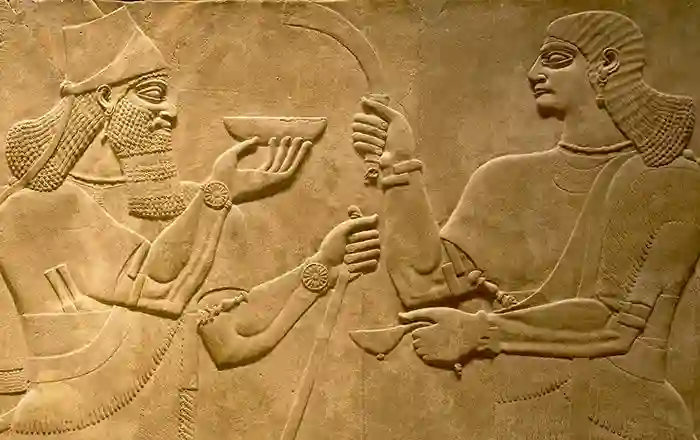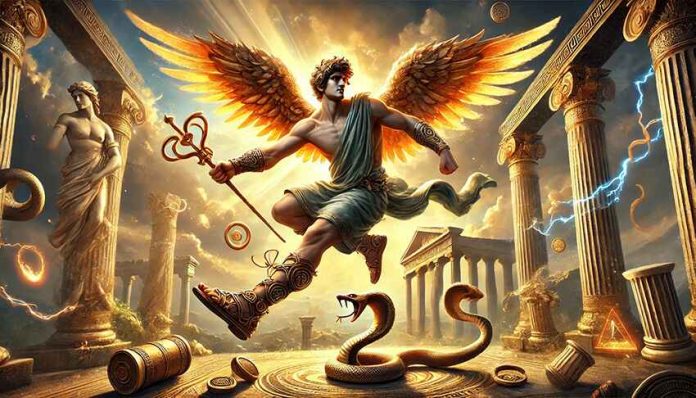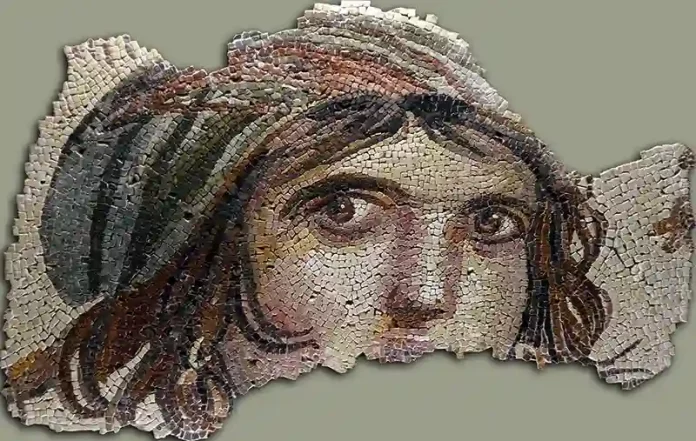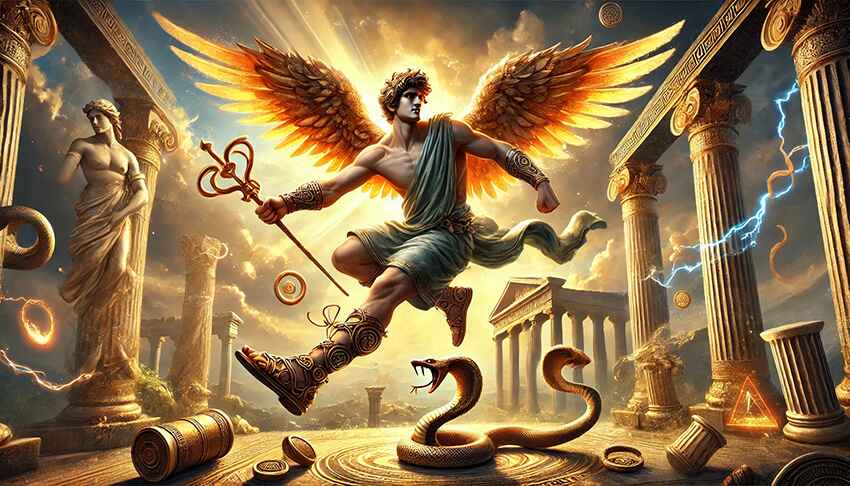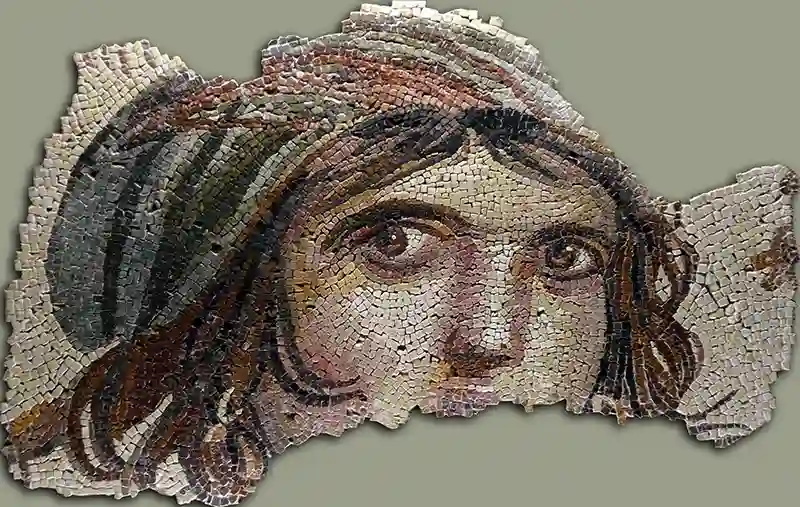Mesopotamia, often referred to as the cradle of civilization, is renowned for its rich history, culture, and, most intriguingly, its art. Mesopotamian art, ranging from imposing sculptures to delicate pottery, has captivated historians and archaeologists for centuries. Yet, despite extensive research, many aspects of this ancient art form remain shrouded in mystery. In this article, we delve into the fascinating world of Mesopotamian art, exploring what we know, what remains unsolved, and the various theories surrounding its enigmatic nature.
The Enigmatic Legacy of Mesopotamian Art
Mesopotamian art is a compelling subject not only for its aesthetic qualities but also for its deep cultural significance and enigmatic aspects. Originating from the land between the Tigris and Euphrates rivers, this ancient art form spans several millennia, encompassing various periods from the Sumerian, Akkadian, Babylonian, to the Assyrian empires. Each era left behind a distinct style, yet all contributed to a unique visual language that still captivates scholars today.
From monumental sculptures to intricate carvings, Mesopotamian art reflects the complexities of a civilization that was advanced in both technological and intellectual pursuits. However, many mysteries endure, prompting questions such as: Why did Mesopotamian artists depict human figures with exaggerated eyes? What was the purpose behind the intricate Ishtar Gate, and how does it embody the essence of Mesopotamian artistry?
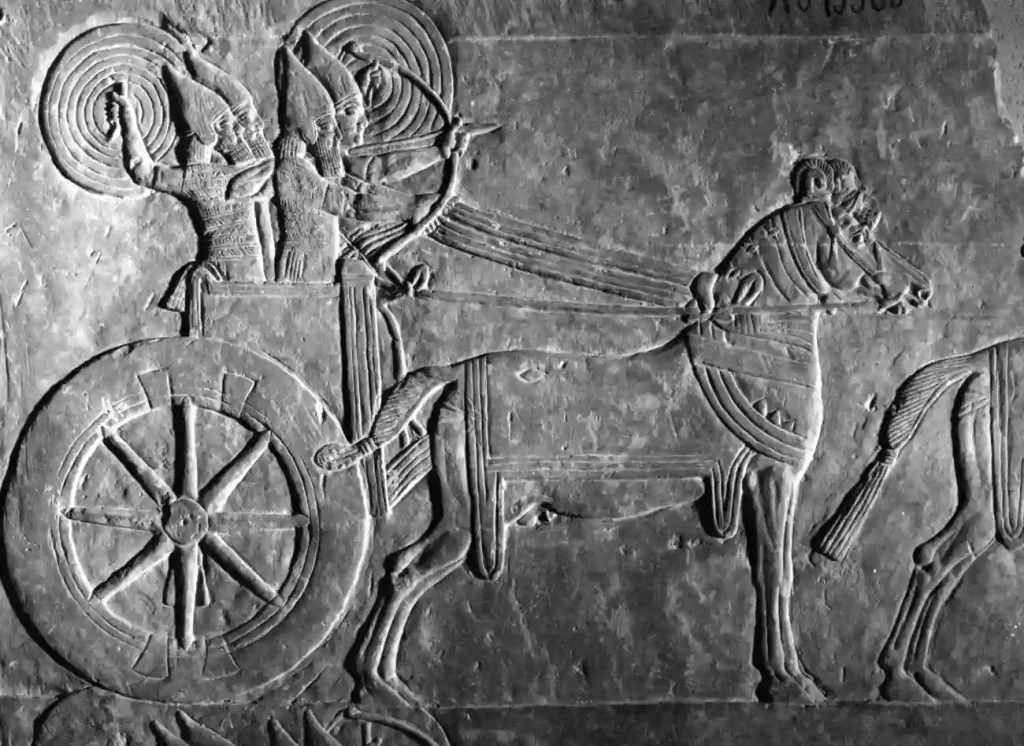
What We Know: The Foundations of Mesopotamian Art
Mesopotamian art, at its core, served both religious and political functions. It was deeply intertwined with the region’s social and spiritual life, aiming to immortalize divine and royal authority. Mesopotamian artists utilized a wide range of materials, including clay, stone, metal, and wood, to create sculptures, reliefs, pottery, and jewelry. One of the most prominent features of Mesopotamian art is the depiction of gods, kings, and mythical creatures, often represented in scenes of worship, warfare, or governance.
Primary Characteristics of Mesopotamian Art
The most distinctive characteristic of Mesopotamian art is its stylistic approach to human figures. For example, early artworks often feature figures with exaggeratedly large eyes, believed to symbolize divine vigilance or spiritual awareness. This artistic convention is particularly noticeable in Sumerian statues, such as the votive statues from the Square Temple at Eshnunna. Similarly, Mesopotamian artists frequently used hierarchical proportions, where the size of a figure indicated its social or divine importance — a practice known as “hieratic scale.”
Another defining feature of Mesopotamian art is its emphasis on narrative reliefs. The famous Stele of Hammurabi, which depicts the king receiving laws from the god Shamash, is an excellent example of how art was used to communicate legal and moral codes. Similarly, the Ishtar Gate, with its vivid depictions of dragons and bulls, is a stunning piece that illustrates the religious and protective roles of Mesopotamian art.
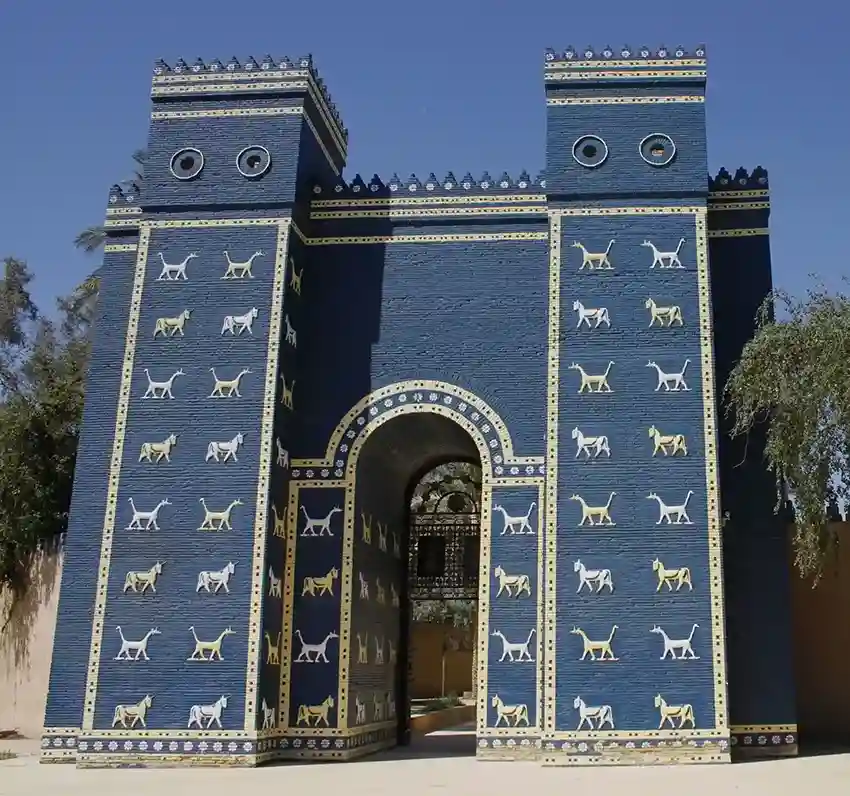
Mysteries and Anomalies in Mesopotamian Art
While much of Mesopotamian art is understood in terms of its themes and materials, several aspects remain elusive. The exaggerated size of eyes in early Mesopotamian art, for instance, continues to puzzle researchers. One theory suggests it was a way to represent the all-seeing nature of divine beings, while another argues it might symbolize perpetual worship and attentiveness of the figures to their gods. Similarly, the use of certain colors — such as the vibrant blues on the Ishtar Gate — raises questions about the symbolic meanings and the technical methods employed to achieve such hues.
Another mystery involves the representation of mythical creatures like Lamassu (winged bulls with human heads) in Assyrian art. Were these purely artistic inventions meant to convey power, or did they serve a more profound metaphysical purpose? Furthermore, while many artifacts depict scenes of daily life or religious rituals, there is a notable scarcity of representations of certain societal aspects, such as the lives of common people or the role of women outside the context of divinity or royalty.
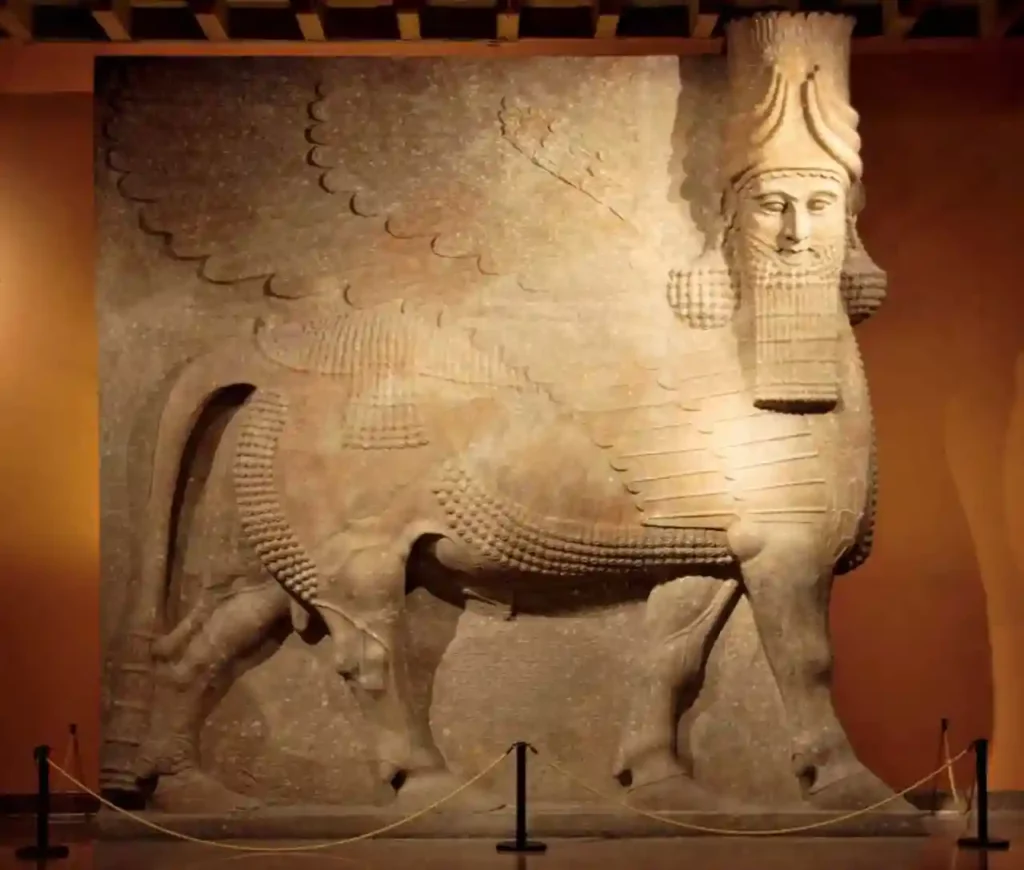
Theories and Speculation: Possible Explanations Behind the Mysteries
Scholars have proposed numerous theories to explain the enigmatic elements of Mesopotamian art. One prevailing theory regarding the Ishtar Gate’s decoration argues that its lavish use of color and intricate animal motifs were intended to impress and intimidate both citizens and foreign visitors, asserting Babylon’s supremacy and divine favor. Another theory suggests that the exaggerated eyes found in early artworks reflect a cultural emphasis on vision, not just in a physical sense but also in terms of spiritual enlightenment or “seeing” the divine.
Moreover, the frequent portrayal of winged bulls and other mythical beings may have been intended as both a spiritual symbol and a psychological tool — a form of apotropaic magic designed to ward off evil and protect the city and its inhabitants. Some experts speculate that these figures might have also represented actual beasts known to the Mesopotamians, now lost to history, or even reflected contact with other cultures and mythologies.
In recent years, there has been growing interest in the use of pigments and colors in Mesopotamian art. The blue bricks of the Ishtar Gate, for example, might have been more than mere decoration. Some suggest that the unique cobalt blue was a symbol of fertility and life, associated with the goddess Ishtar herself, while others believe it represented the heavens or cosmic order. For a comprehensive examination of the significance of color in ancient artworks, see the Metropolitan Museum of Art’s Guide on Ancient Art, which provides an in-depth analysis of how colors were used symbolically across various ancient cultures.
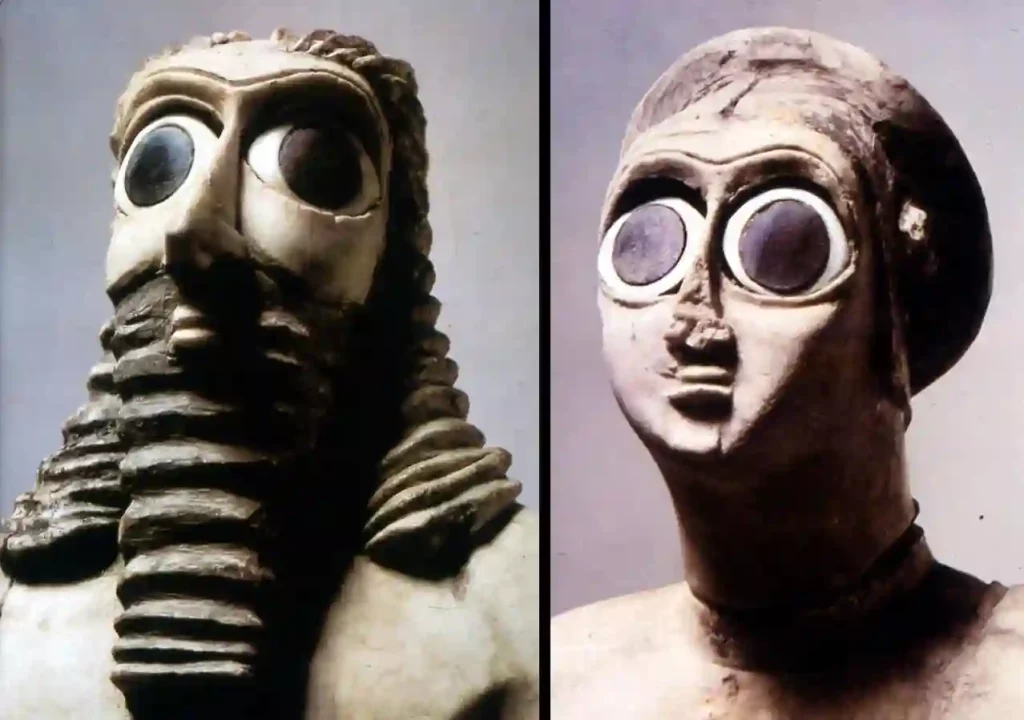
Frequently Asked Questions (FAQs)
1. What is Mesopotamian art?
Mesopotamian art refers to the artistic works created by the civilizations that existed in the region of Mesopotamia, between the Tigris and Euphrates rivers, including Sumer, Akkad, Babylon, and Assyria. It encompasses a variety of mediums and styles, ranging from sculpture and pottery to relief carvings and monumental architecture.
2. Why is the Ishtar Gate an important piece of Mesopotamian art?
The Ishtar Gate is significant due to its elaborate decorations, symbolic use of color, and representation of Babylonian gods and mythical creatures. It also served as a powerful political and religious statement, showcasing Babylon’s wealth and divine favor.
3. How is the Stele of Hammurabi typical of Mesopotamian art?
The Stele of Hammurabi is characteristic of Mesopotamian art in its use of hierarchical scale, depiction of divine sanction, and the integration of both text and imagery to communicate legal authority and religious devotion.
4. What explains the exaggerated size of eyes in early Mesopotamian art?
The oversized eyes in early Mesopotamian art are believed to symbolize spiritual vigilance or divine presence, reflecting a culture that valued spiritual awareness and divine connection.
5. What was the purpose of Mesopotamian art?
Mesopotamian art served multiple purposes, including religious worship, political propaganda, social documentation, and as a means to convey cultural narratives and values.
Conclusion: Mesopotamian Art’s Enduring Mystique
Mesopotamian art continues to intrigue and inspire. It represents a civilization that was both profoundly spiritual and intricately connected to its environment, where every piece of art was a conduit to the divine or a reflection of earthly power. For a deeper dive into the cultural context of Mesopotamian deities and their representation in art, check out the exploration of Enlil, the Sumerian God of Truths.
While much has been discovered, many questions remain unanswered. Why did artists favor certain forms and symbols? What did these images mean to the people who created and viewed them?
As new technologies emerge and archaeological techniques advance, there is hope that some of these mysteries might one day be resolved. Until then, Mesopotamian art remains a captivating enigma — a testament to the creativity and complexity of one of history’s most influential civilizations.
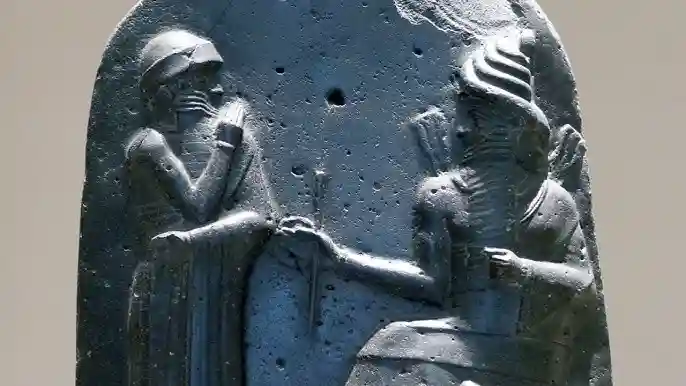
Use of Our Content
⚠️ Content on “Mystery Uncover” is protected under US and International Copyright Laws.
You are free to reuse, republish, and share our content by giving credit to the source as Mystery Uncover with a link to the original material on mysteryuncover.com.


